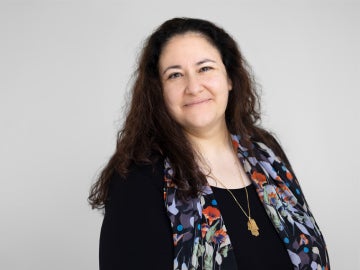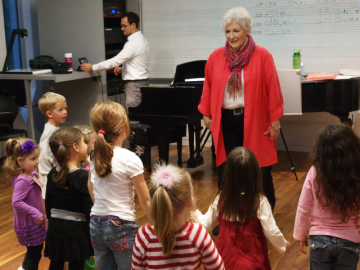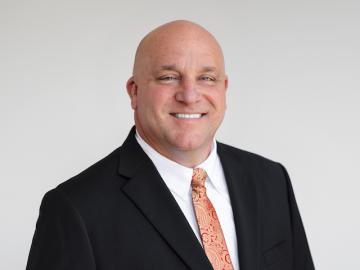Campus News
Teaching in the New Normal: The Study of Medieval Medical Manuscripts in the Time of COVID-19
July 16, 2020
Communications Staff
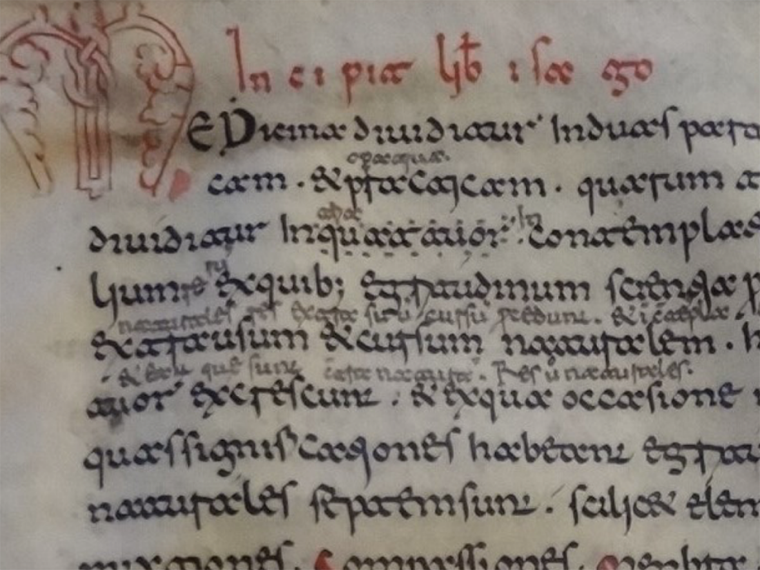
The beginning of the Liber isagogarum in the manuscript Monte Cassino 225, c. 1075-1080.
Photo credit: Courtesy of Eliza Glaze and used with permission.
These days, the classroom has taken on new meaning for both faculty and students at Oberlin. In this series we are sharing stories from faculty on how they are navigating this new normal.
Ben Lee, professor of classics, describes how a group of faculty and students from Oberlin, Duke University, and Coastal Carolina University, have been able to conduct collaborative research on pre-modern medical history, despite the current circumstances that have made typical methods of studying medieval texts—international travel to archives and libraries—impossible. Through the heavy use of technology, the group has studied the Arabic scholar Constantine the African who translated more than two dozen medical treatises from Arabic into Latin. His undertaking made medical knowledge available in Europe that was previously unknown.
For most academics who study ancient and medieval texts and the manuscripts that preserve them, summer is the primary season for traveling internationally to archives and libraries around the world. However, with the COVID-19 pandemic shutting down those libraries in March and grounding scholars in their homes, most research has been put on hold. Starting June 1, a small group of faculty and students at Oberlin College, Duke University, and Coastal Carolina University decided to develop new methods to move ahead with crucial research in the history of medicine, the manuscripts of Southern Italy, and the 11th century’s earliest translations of Arabic medical authorities into Latin. These manuscripts illuminate a little-known but absolutely crucial moment in history, described by Professor Michael McVaugh, one of the world’s foremost authorities on the history of medicine, as “One of the turning points in the history of Western civilization: the moment when Greco-Arabic medicine was introduced into the Latin European world.”
The Virtual Scriptorium Project studies the earliest manuscripts and translations generated in that incredible historical moment between 1075-1100, when the Arabic scholar Constantine the African, a medical man from Tunis, traveled first to the port city of Salerno and then to the Abbey at Monte Cassino. Over a period of roughly 25 years, Constantine translated from Arabic into Latin more than two dozen medical treatises. It was a stunning flood of medical knowledge unknown in Europe before Constantine.
One of the shortest but more influential of Constantine’s translations stands out in two particular ways:
- As an introduction (Isagoge) to medicine, it became the first treatise of between five and seven original texts in a basic syllabus known as the Articella or Little Art of Medicine, and it was used as the opening text in medical schools across Europe for some 500 years.
- Amazingly, two early draft manuscripts of the Isagoge survive today that were produced in Constantine’s lifetime and under his direction. They have not been studied, nor have these early draft versions of the text been published.
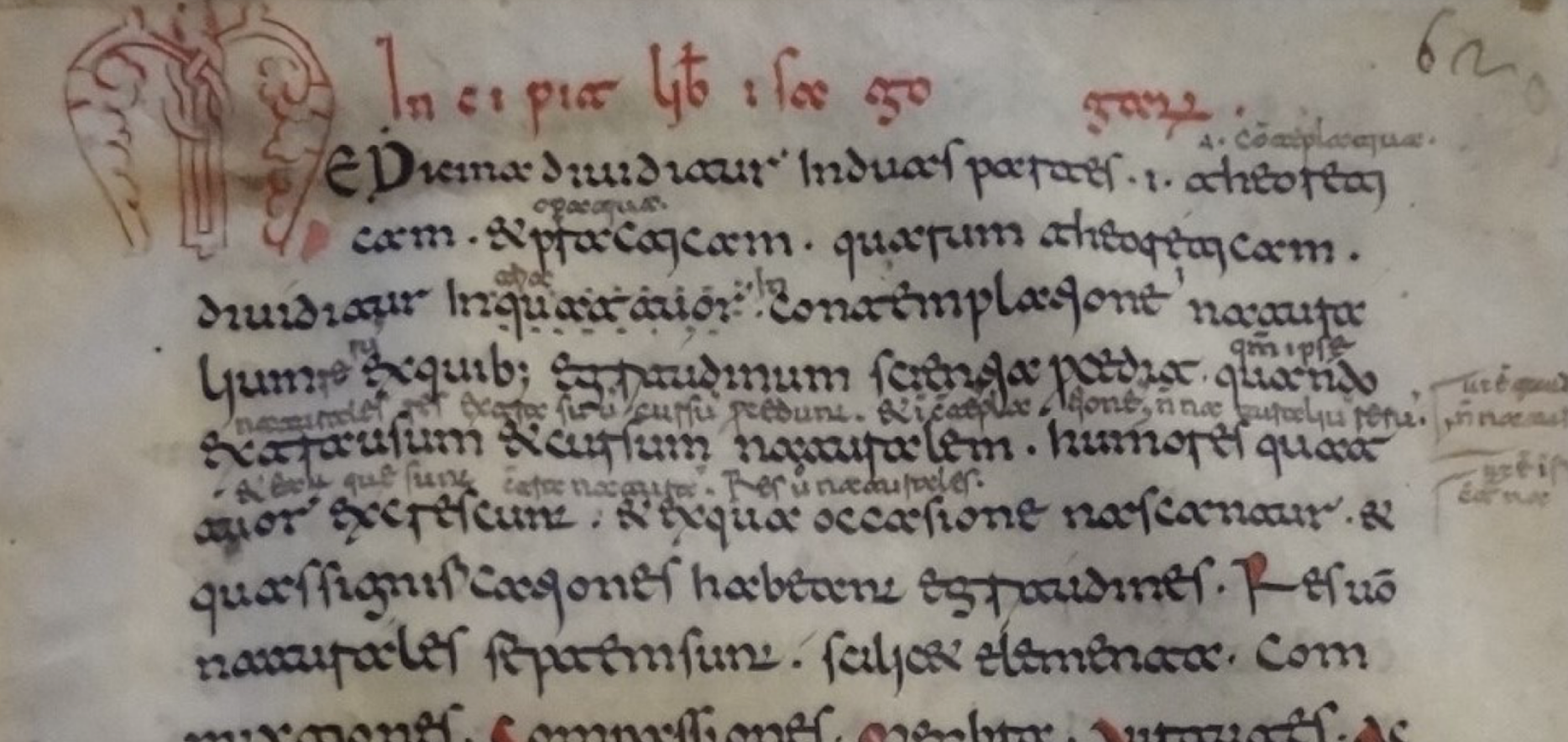
It has been the long-time dream of Francis Newton, emeritus professor of Latin at Duke University, and his former student Eliza Glaze, professor of history at Coastal Carolina University, to investigate and publish these earliest versions of the seminal work of Constantine the African. Newton first studied one early manuscript of the Isagoge 31 years ago. It was clear such a study would require a team of scholars and serious Latinists. With research travel plans scuppered by COVID-19, Professor Ben Lee raised funds to support two Oberlin classics students, Emma Glen '22 and Han Yang '23, as research assistants for the project. In fewer than three weeks, these assistants became skilled in the study of the difficult and highly calligraphic script of medieval Southern Italy, the Beneventan minuscule, and they are today full partners in the project of preparing an online transcription of the earliest manuscripts of Constantine’s Isagoge.
The Virtual Scriptorium’s group work focusing on Constantine’s drafts of the Isagoge has been made possible by a convergence of new technologies. Above all, the recent digitization of manuscript images allows the team to study the original documents without traveling to Europe. Zoom’s screen-sharing function allows the five scholars to all see and discuss both the manuscript images and their ongoing transcriptions simultaneously. The two draft manuscripts are both imperfect early versions of the text, so discussing the translator’s and his scribes’ decisions paragraph by paragraph is critical to an emerging understanding of Constantine’s choices. Additionally, Google Docs allows all five to see and edit the transcription document at the same time. That saves a tremendous amount of time circulating drafts, renaming draft versions, and inputting edits.
The transcription and analysis of the first manuscript (Paris, BnF n.a.l. 1628) is complete, and the group has just now completed the transcription of the second (Monte Cassino, Archivio della Badia 225). Already a wealth of new information about these earliest surviving witnesses to the text of the Isagoge has been amassed. Neither manuscript is very distant from the wax tablets on which Constantine’s dictated translation was first recorded, but the group now believes the Monte Cassino manuscript to be the earlier version. It is the group’s goal to have transcriptions of three or four of the palaeographically dated earliest manuscripts presented in online format on an Oberlin open website; this will be useful to scholars interested in the study of this astounding revolution in the culture of mediaeval Europe and the Mediterranean. Those interested might include historians of medicine, students of mediaeval Latin, art historians, and cultural historians, among others.
Junior Emma Glen says she’s expanded her knowledge and skills through this project. “In addition to the obvious benefit to my Latin skills, this research in tracking the spread of Greek and Arabic medical knowledge within mediaeval Europe provides me with a greater understanding of the preservation, transformation, and transfer of knowledge from the classical world, while also allowing me to learn about the history of medicine in Europe and its interactions with the Arabic world.”
For Han Yang, a rising sophomore, the experience has been enriching. “We have been working with three wonderful historians, palaeographers, philologists, and—most influential to me—teachers. I would like to compare this experience to the likeness of an apprenticeship, where we get to learn about the basics of reading, editing, and thinking about manuscripts from hands-on exercises. This experience has been quite special for me for a few reasons. First, prior to attending Oberlin, I spent months in North Africa, learning classical Arabic culture and thought. I now get to see what I learned from a totally different lens that is the Nachleben of mediaeval Arabic scholarship. Second, as a learner of English, I can feel the hardship Constantine may have endured while producing the Latin translations, along with seeing brilliance in his ambitious undertaking.”
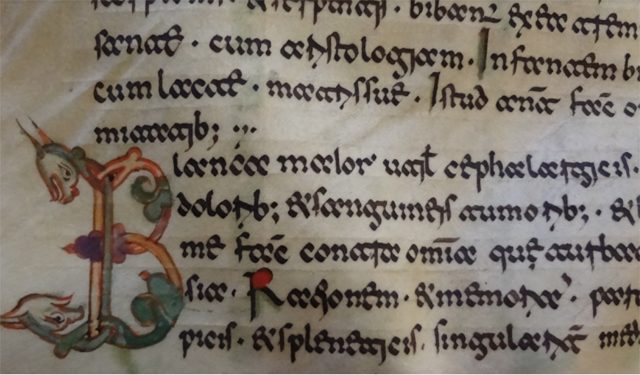
The group is grateful for the generous support of Tom Cooper ’78 and the Cooper Fund for Faculty Development, as well as the Office of Undergraduate Research that are sponsoring this project and research assistants. Coastal Carolina University and Duke University have also contributed materials to support the project, for which the group is grateful. The team plans to continue their studies through the fall semester and publish their findings not just online but also in a scholarly journal.
You may also like…
Remembering Former Visiting Assistant Professor Leila Ben-Nasr
Leila Ben-Nasr, a former visiting assistant professor of comparative American studies, died on November 28, 2025.
Oberlin Community Remembers a Beloved Retired Professor
A member of Oberlin faculty for 13 years, Peggy Bennett was known by students and the Oberlin community for creating and leading MusicPlay, a preschool classroom and learning lab run as part of the...
Eric Rooks Named Director of Campus Safety at Oberlin
Longtime public servant emphasizes collaborative partnerships and kindness.
